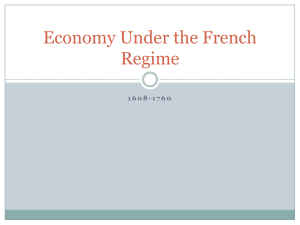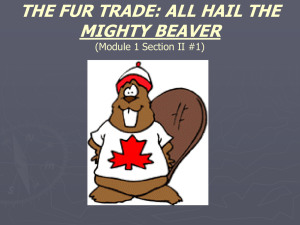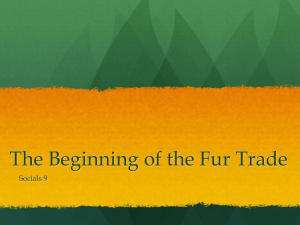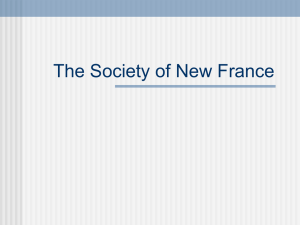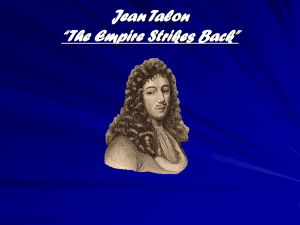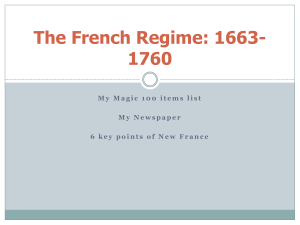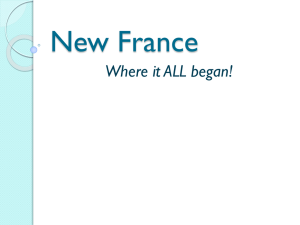File
advertisement
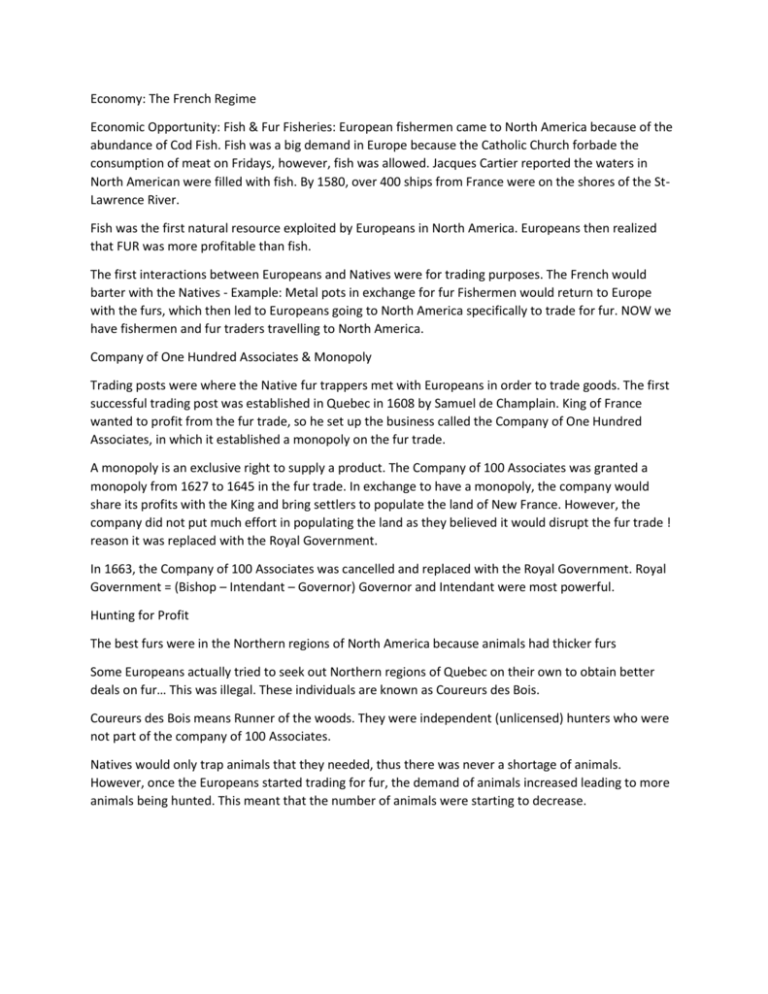
Economy: The French Regime Economic Opportunity: Fish & Fur Fisheries: European fishermen came to North America because of the abundance of Cod Fish. Fish was a big demand in Europe because the Catholic Church forbade the consumption of meat on Fridays, however, fish was allowed. Jacques Cartier reported the waters in North American were filled with fish. By 1580, over 400 ships from France were on the shores of the StLawrence River. Fish was the first natural resource exploited by Europeans in North America. Europeans then realized that FUR was more profitable than fish. The first interactions between Europeans and Natives were for trading purposes. The French would barter with the Natives - Example: Metal pots in exchange for fur Fishermen would return to Europe with the furs, which then led to Europeans going to North America specifically to trade for fur. NOW we have fishermen and fur traders travelling to North America. Company of One Hundred Associates & Monopoly Trading posts were where the Native fur trappers met with Europeans in order to trade goods. The first successful trading post was established in Quebec in 1608 by Samuel de Champlain. King of France wanted to profit from the fur trade, so he set up the business called the Company of One Hundred Associates, in which it established a monopoly on the fur trade. A monopoly is an exclusive right to supply a product. The Company of 100 Associates was granted a monopoly from 1627 to 1645 in the fur trade. In exchange to have a monopoly, the company would share its profits with the King and bring settlers to populate the land of New France. However, the company did not put much effort in populating the land as they believed it would disrupt the fur trade ! reason it was replaced with the Royal Government. In 1663, the Company of 100 Associates was cancelled and replaced with the Royal Government. Royal Government = (Bishop – Intendant – Governor) Governor and Intendant were most powerful. Hunting for Profit The best furs were in the Northern regions of North America because animals had thicker furs Some Europeans actually tried to seek out Northern regions of Quebec on their own to obtain better deals on fur… This was illegal. These individuals are known as Coureurs des Bois. Coureurs des Bois means Runner of the woods. They were independent (unlicensed) hunters who were not part of the company of 100 Associates. Natives would only trap animals that they needed, thus there was never a shortage of animals. However, once the Europeans started trading for fur, the demand of animals increased leading to more animals being hunted. This meant that the number of animals were starting to decrease. How did this effect the natives’ lifestyles? Who was involved in the fur trade? 1. Natives: Trapping the animals 2. Coureurs des Bois: illegal, unlicensed animal trappers 3. Engages: Workers who were sent from France to open trading posts 4. Traders 5. Companies, such as the 100 Associates 6. Craftsmen: men who transformed the furs into hats, coats, etc. 7. Retailers: men who sold the transformed goods Mercantilism Mercantilism: An economic system that occurs when a King possesses land (colony) and uses its natural resources to make money. Natural Resource = Furs Making Money = Transformation of furs into goods Fur was brought to France and was transformed into goods (hats, coats, etc.). These goods would be sold in France and later on in New France as well. Trading Colony vs. Settlement Colony Trading Colony (before 1663) Using a colony for trading purposes only. Population was low because men were going to New France only to trade. Territory was growing in order to search for more fur. The further the workers went, the more land they claimed. Settlement Colony (after 1663) The focus is on increasing the population. As of 1663, that was the focus of France for their colony in North America. Did New France become rich? NO New France did not become rich because it did not trade enough or make enough goods to sell. Profit made was only enough to survive! Why? New France was mostly farmland and it was less populated. No Money + Bad Economy = Weak Colony New France’s Weak Economy France always had to support New France financially. Fur was the main export and any profit made from trade remained in France. No profit was made in New France. When the King created the Royal Government in 1663, he sent the intendant (Jean Talon) to take care of internal a!airs in New France. What did the intendant take care of? - Increasing population - Organized trade - Collecting taxes - Set up industries - Granted Seigneuries Jean Talon encouraged the following industries in New France to help boost the economy: - Hat making (transforming fur) - Ship building (transforming wood) - Iron works - Tanning leather France had other colonies in Asia, the Caribbean, Africa and South America. Trading with other colonies was an idea that Jean Talon thought would help the economy Jean Talon helped set up trading with French colonies in Africa and the Caribbean. This was called the Triangular Trading System. Materials such as sugar, tobacco, cotton and furs would be sent to France: France would sell the manufactured goods back to the colonies: The Caribbean and New France would trade materials and some manufactured goods with each other. Men and women from Africa were sent to the Caribbean to work as slaves. An Expensive Colony to Maintain Jean Talon’s measures helped improve New France’s economic situation. However, the colony still wasn’t become richer. Why? New France was importing more goods than it exported, which means they spent more than they made: The colony was becoming larger, which meant more protection by soldiers would be needed in case of potential enemies: New France was simply an expensive colony to maintain by France. Agriculture Fishing and fur trade were important, but agriculture was an important economic activity as well. Agriculture was important for supplying surpluses to: Local markets (cities in New France) France Agricultural processing activities in NF included: Brewing beer Grinding different grains Manufacturing canvases (linen sheets) Rigging (making rope) Effects of agricultural activities in NF: Increase in the area of cultivated land Construction of mills (to grind the grain) Establishment of public markets Craft Activities Wig making Construction of casks Production of metal objects Carpentry Masonry (bricks and stone work) Hat making Crafts led to: Growth of cities Presence of boutiques and workshops in the neighbourhoods

